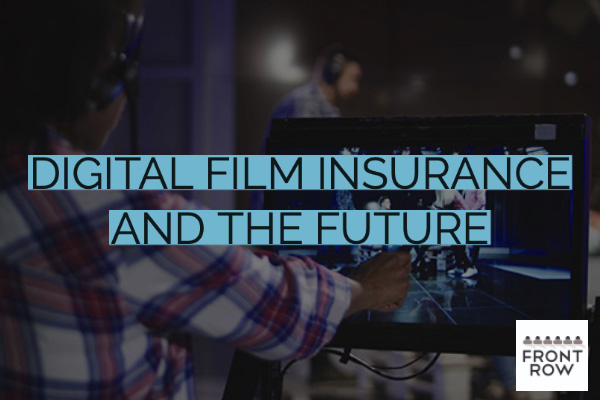Digital Film Insurance and the Future | Digital Media Insurance

Insurance for digital features, TV series and documentaries is evolving.
It’s the case that many production companies now incorporate scenes in their films that were once captured live but are now being created, edited and manipulated digitally in post-production. What this means is that the need for negative/faulty insurance is becoming gradually reduced and will soon be replaced by digital image capture, processing and storage. Examples:
- In 2009, Slumdog Millionaire became the first movie shot mainly in digital to win the Academy Award for Best Cinematography
- The highest grossing movie in the history of cinema (to date), Avatar, was shot on digital cameras
As digital cinematography shifts towards “tapeless” or “file based” workflows, insurers needs to ensure that they are covering similar incidences of risk, tailored towards loss and/or damage to digital media.
What this means for insurers
Digital data should be covered as software under the negative coverage policy definition, and though some policy wordings incorporate coverage for digital data, the wordings might still need to be formatted and reworded for digital media. Digital capture may occur on video tape, hard disks, flash memory, or other media which can record digital data, therefore wordings need to reflect the new technology and storage devices which presently, many don’t.
If the film industry moves solely towards digital film, then the risk rating and pricing related to production packages will need to be reviewed given that the risk factor between the periods of principal photography and post-production will be significantly reduced and the risk of loss will be shifted towards another area such as post-production.
Typically insurers will require information relating to the lab and type of film used, whereas with digital cinematography the shift will be towards the type of camera being used and the experience of the operator in using an HD or Red Camera. Back up procedures will have more impact on the rating of a production.
Why digital media insurance?
Various technical considerations arise when contrasting film vs. digital cinematography, i.e., when shooting on film, response to light is determined by what film stock is used, whereas with digital photography, response to light is determined by the CMOS or CCD sensor(s) in the camera, so the cinematographer needs familiarity with the specific camera model. Typical production packages are rated based on all costs incurred during principal photography and exclude many post-production costs. Production company requirements are now shifting toward a significant portion of the risk stemming from post-production.
Inferences
Technology innovation has meant that new vendors have emerged on the market such as RED and Silicon Imaging that are primarily focused on digital technology.
Impact on Claims/Losses
What this means for insurance losses is that innovative risk control and risk transfer methods need to be addressed that specifically relate to new exposures from digital media products. The types of losses that can result stem from:
- transferring digital data to/from 2D-3D conversion
- migration of data from old forms of storage to new forms
- care, custody and control issues relating to the migration and archiving of data
The Future
As insurers revisit their policy wordings, they must ensure that their coverage and exclusions match with the industry requirements, as the advances in digital technology won’t slow down to wait out the process. While wordings might not currently exclude losses resulting from digital cinematography, insurers must ensure that new risk rating methods and coverage address the new risks that will inevitably arise during post-production and storage of data.

Share your thoughts on this post